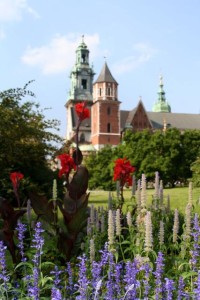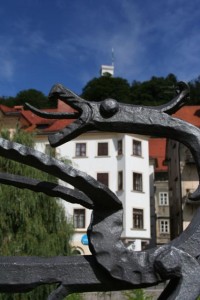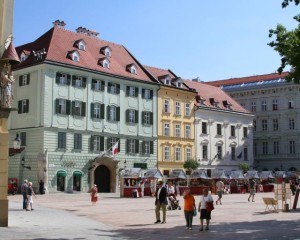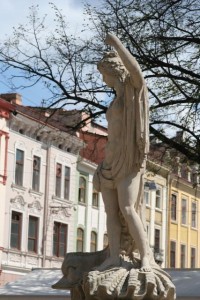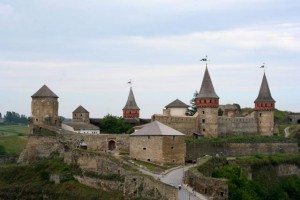Mon 25 Aug 2008
Eastern Europe, Naturally
Posted by Shanna under Slovakia, Slovenia
[2] Comments
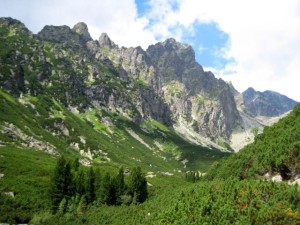
Trying to picture Eastern Europe before I ever saw it, I always envisioned lots of communist bloc housing. And also cabbage. And clouds. After having spent about six weeks there, I can report that it has at least the first two of these things in ready supply. As it turns out, though, Eastern Europe also boasts some of the most spectacular natural wonders I’ve ever seen.
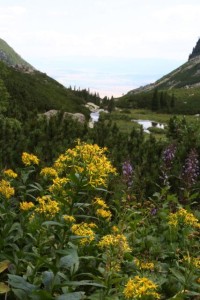
Driving from Poland into Slovakia we crossed into the High Tatras, a 15-mile long mountain range that seems to spring up from the floor of an incredibly green, wildflower-covered valley. We spent a day hiking up the Tatras’s rocky cliffs and, alas, we were not alone. We shared the trail with lots of other hikers, including a woman in white hot pants who, embarrassingly enough, left us in her dust. Happily, though, the views (of everything but the woman in hot pants) were incredible, and well worth the climb.
From Slovakia, it was on to Slovenia, where our first foray into the natural world took us into what felt like the bowels of the earth. We were in the Skocjan Caves, a series of underground chambers covered in stalactites and stalagmites whose bright coloring reflect the myriad minerals they contain. A river ran through the last cave in the series, and we had to cross it via a dizzying bridge that I really wish we could’ve captured on film. (Sadly, taking pictures in the caves is not allowed.)
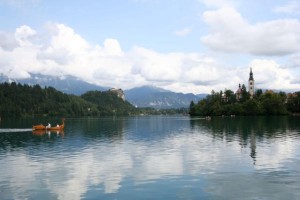
After the caves came Lake Bled, Slovenia’s most popular tourist destination, and for good reason. Watched over by a towering castle, the blue-green lake wraps itself around a tiny, perfect island, on top of which sits a tinier, more perfect church. Unsurprisingly, the church is a popular setting for weddings.  Some 99 stairs connect the lakeside dock with the church, and it’s said that grooms often try to prove their “fitness” for marriage by carrying their brides up the entire flight. When I suggested to Derek that he attempt the feat, he became very interested in photographing the family of swans that make their home on the water’s edge.
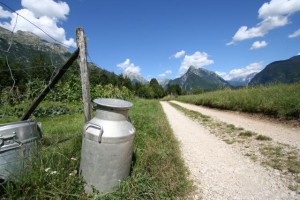
Slovenia’s Julian Alps were our final destination in Eastern Europe, and they turned out to be one of the our favorite places in the world. Named after Julius Caesar, the Alps occupy Slovenia’s northwest frontier with Italy and its northern border with Austria. (In fact, in one mountain town we visited, we were just a five-minute walk away from both countries.) We spent most of our time in the Alps in a small town called Bovec, which is in the valley (the Soca) that witnessed the World War I battles that became the setting for Ernest Hemingway’s A Farewell to Arms. (Hemingway drove an ambulance for Italy during the war.)
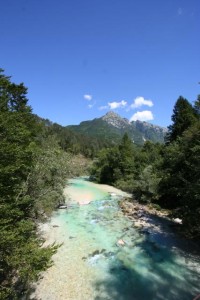
Looking around at the incredible scenery, it was kind of hard to to believe that anyone could retain the will to fight in the midst of beauty like this. The ridiculously turquoise Soca River courses down the Alps and into the verdant valley below. It is joined by another river, the Susec, which has carved out the canyon that served as a veritable waterslide for us during our first-ever attempt at an adventure sport called, accurately, “canyoning.” Donning neoprene bodysuits, aquasocks, helmets and plastic diaper-looking things that allegedly make it easier to slide over the rocks but are potentially there only for the amusement of our guides, we climbed up part of a mountain (not a tough hike overall, but made much more difficult by the fact that were were wearing not shoes but aquasocks) and then slid and jumped our way back down to the bottom. The experience was exhilarating, only a little scary and–like so much of what we’ve seen in Eastern Europe–highly recommended.
High Tatras, Slovakia
[embedplusvideo height=”350″ width=”450″ editlink=”http://bit.ly/1r6dRoV” standard=”http://www.youtube.com/v/OjihqntS9lQ?fs=1″ vars=”ytid=OjihqntS9lQ&width=450&height=350&start=&stop=&rs=w&hd=0&autoplay=0&react=1&chapters=¬es=” id=”ep1906″ /]
Julian Alsp, Slovenia
[embedplusvideo height=”350″ width=”450″ editlink=”http://bit.ly/1r6dNW5″ standard=”http://www.youtube.com/v/ih62jyG6OvQ?fs=1″ vars=”ytid=ih62jyG6OvQ&width=450&height=350&start=&stop=&rs=w&hd=0&autoplay=0&react=1&chapters=¬es=” id=”ep6119″ /]
Google Video
